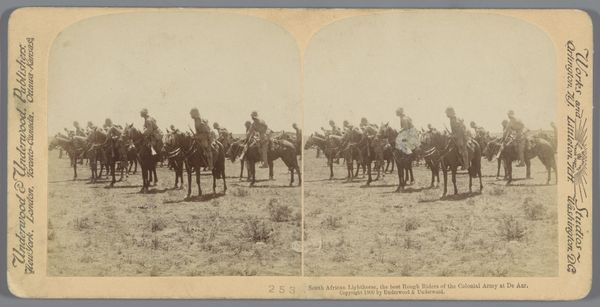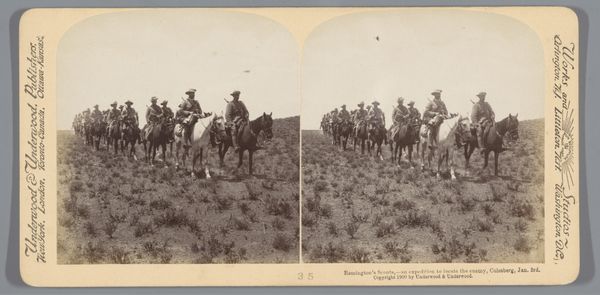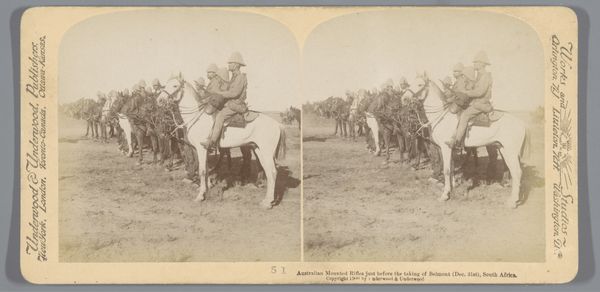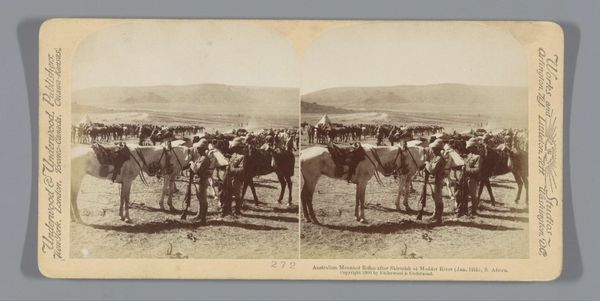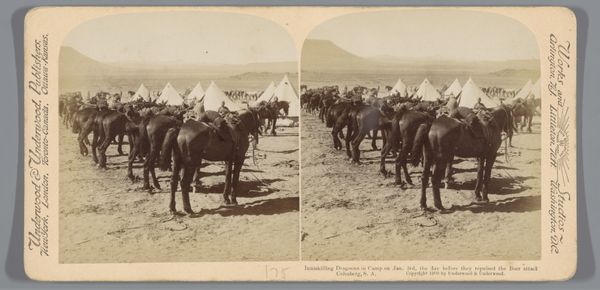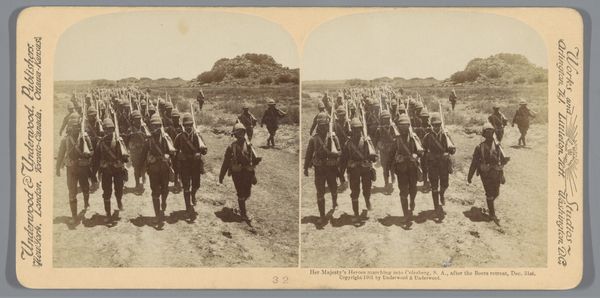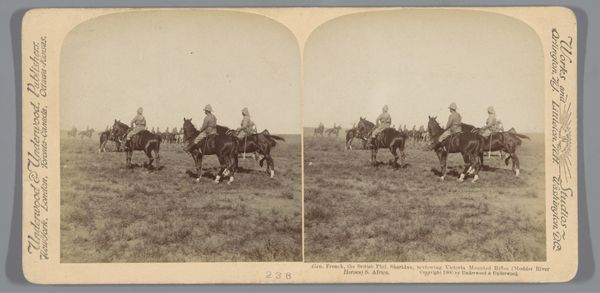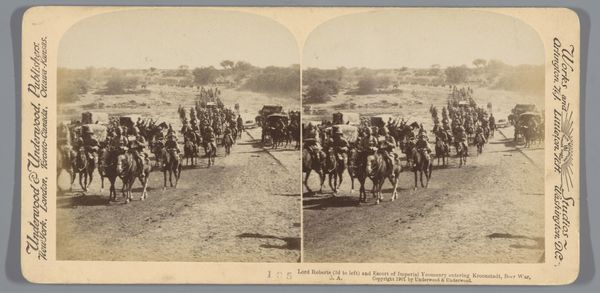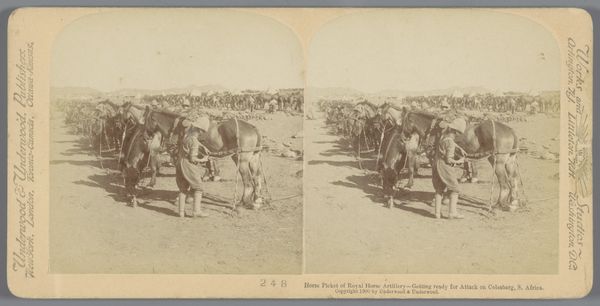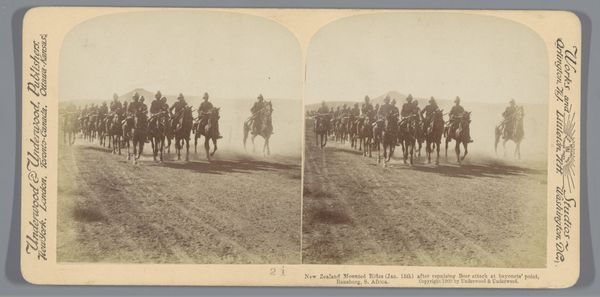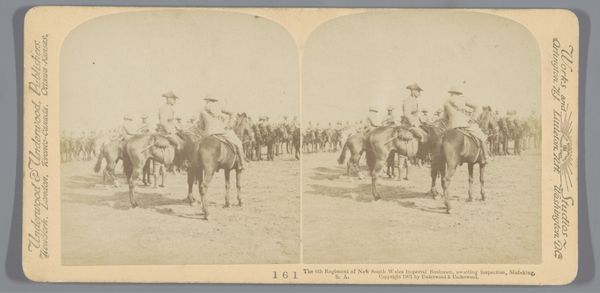
photography, gelatin-silver-print
#
portrait
#
still-life-photography
#
landscape
#
photography
#
gelatin-silver-print
#
realism
Dimensions: height 88 mm, width 178 mm
Copyright: Rijks Museum: Open Domain
Curator: Immediately, I see a powerful visual statement of imperial authority—British soldiers, mounted, in what appears to be South Africa. Editor: There's a stillness to it. A slightly bleached, desolate landscape, yet the soldiers are posed so formally, like statues. The light has such a nostalgic feel. Curator: Indeed. This gelatin-silver print, whose authorship remains anonymous, is titled “British soldiers on horseback in Rensburg, South Africa,” and its date has been tentatively placed somewhere between 1900 and 1930. We should keep in mind the British presence in South Africa and the Anglo-Boer War, which ended in 1902. I believe this photographic image needs to be seen in context with the larger political motives of the time. Editor: It does strike me how upright they are, even rigid. Military men become like emblems of a cause, or instruments of larger ideologies. Their bearing, the horses themselves, their presence in that specific landscape... all create a potent symbol. The horses project such grace, even subservience; are they meant to further legitimize British control and supremacy? Curator: Perhaps, although realism, in photographs of war, offered very subtle critiques of authority at the time. The details would become the subject, shifting it slightly from authority to a study of people under authority, in conflict. Editor: I notice how closely packed they are. Perhaps this grouping itself signifies unity and might in a foreign landscape. Almost like a show of power and confidence, of unyielding military bearing and colonial domination. It's really fascinating how a still image can convey so much underlying tension, historical complexities, and maybe some propagandist intention. Curator: Right, these seemingly simple images can often speak volumes about broader power structures and cultural attitudes of their time, prompting a lot of thought for contemporary audiences, especially as we consider legacy. Editor: Yes, indeed, an enduring symbol evoking reflection on history's lasting impact.
Comments
No comments
Be the first to comment and join the conversation on the ultimate creative platform.
